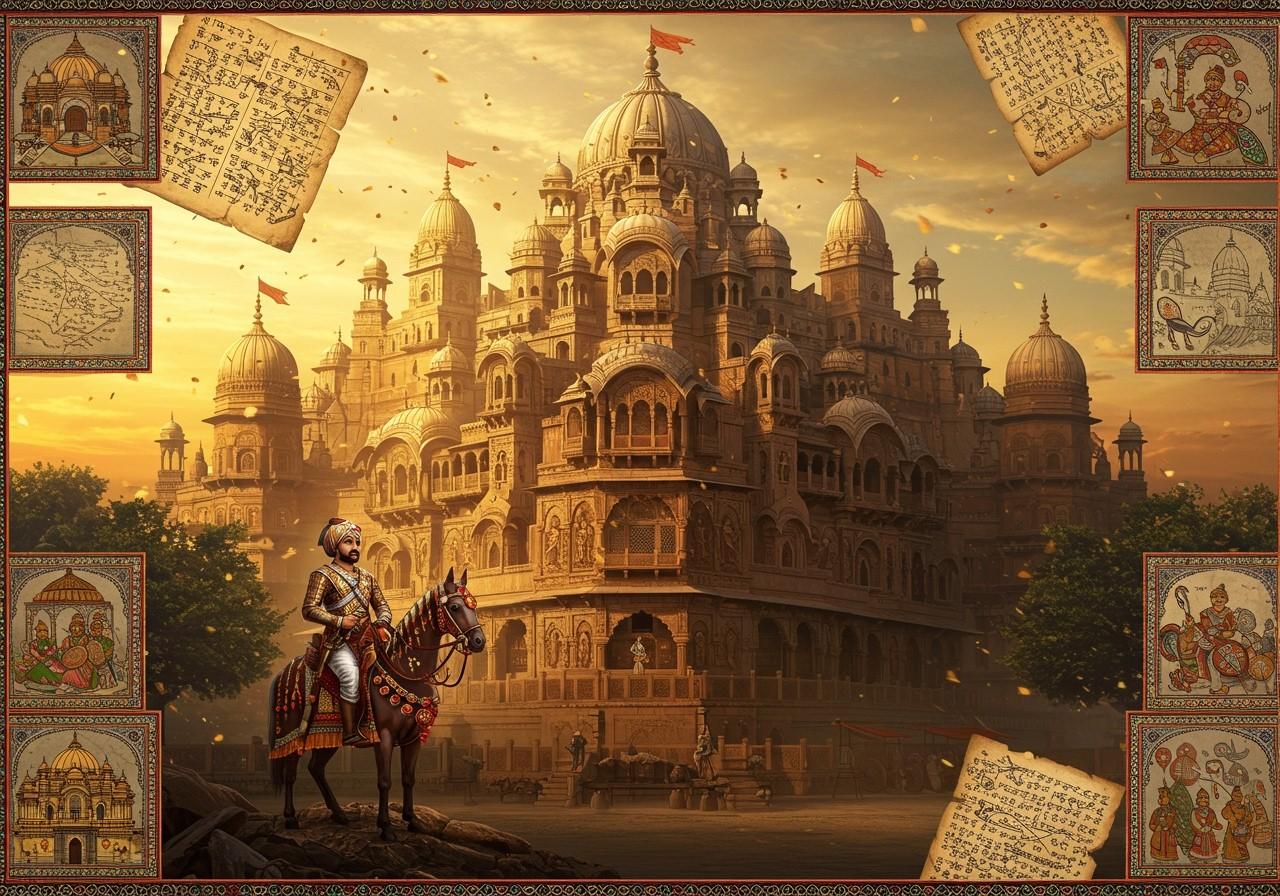
The Gurjara-Pratihara dynasty, a prominent power in medieval India, reigned from the 6th to the 11th centuries. Known for their military strength, architectural marvels, and patronage of the arts, they left an indelible mark on Northern India. This article delves into the history, significance, and cultural contributions of this influential dynasty.
A Deeper Dive into Gurjara-Pratihara History
The Gurjara-Pratihara dynasty, alternatively known as the Pratiharas of Kannauj or the Imperial Pratiharas, held significant power in medieval India. Established by Harichandra in the 6th century, the dynasty expanded its influence under prominent rulers like Nagabhata I, Mihira Bhoja, and Mahendrapala I. Their reign, spanning from the 6th to 9th centuries in Mandor, Marwar (for the Harichandra line) and the 8th to 11th centuries in Ujjain and later Kannauj (for the Nagabhata line), saw constant conflict with contemporary powers such as the Palas and Rashtrakutas.
The Gurjara-Pratiharas played a pivotal role in repelling Arab invasions, thereby safeguarding Indian culture. Their architectural prowess is evident in magnificent structures like the temples at Osian and Khajuraho. These temples exemplify the dynasty’s contribution to art and architecture. Their socio-political structure encompassed a well-structured administration and a formidable military. Furthermore, they extended patronage to both Hinduism and Jainism, enriching the religious landscape of the time. Ultimately, internal conflicts and external invasions led to the decline of the Gurjara-Pratihara dynasty.
Deciphering the Meaning of Gurjara-Pratihara
The term “Gurjara” is believed to denote a region and its people, possibly connected to present-day Gujarat and Rajasthan. “Pratihara” translates to “door-keeper” or “defender,” signifying their crucial role in protecting India’s western frontiers. Understanding these terms provides valuable insight into the dynasty’s historical significance.
A Guide to Pronouncing Gurjara-Pratihara
For accurate pronunciation, divide “Gurjara-Pratihara” into phonetic segments: “Gur-ja-ra Pra-ti-ha-ra.” Focus on each syllable:
- Gur: गूर
- Ja: ज
- Ra: र
- Pra: प्र
- Ti: ति
- Ha: ह
- Ra: र
Correct pronunciation demonstrates respect for historical accuracy and cultural heritage.
Architectural Marvels of the Gurjara-Pratiharas
The Gurjara-Pratihara dynasty’s architectural contributions, particularly in temple construction, are noteworthy. The temples at Osian showcase the early Pratihara architectural style, while the Khajuraho temples, constructed during their era, are renowned for their intricate sculptures. The dynasty’s use of sandstone and advanced building techniques significantly influenced later Indian temple architecture. Pratihara temples frequently depicted religious and mythological themes, reflecting the dynasty’s power and beliefs.
Cultural Flourishing under the Gurjara-Pratiharas
The Gurjara-Pratihara rulers were patrons of arts and literature. Their reign saw the creation of significant literary works, including religious texts and poetry. Pratihara sculptures and paintings display distinctive artistic styles of the period. Their support for Hinduism and Jainism is evident in their temple construction and religious practices. The influence of Pratihara culture extended to neighboring regions and subsequent dynasties, leaving a lasting legacy that continues to be studied and admired.
Poojn.in: Your Source for Traditional Ritual Items
Poojn.in, India’s leading online store for cultural goods and services, offers a wide selection of authentic clay items essential for traditional rituals and ceremonies. For those seeking to honor the legacy of the Gurjara-Pratiharas, our collection provides everything needed to conduct ceremonies with authenticity and reverence. Whether you require a Large Clay Ghat (Noggin) for water offerings, a Medium Size Ghot (Dwar Ghat) for temple or home rituals, Clay Sora and Dhakkan sets for preparations, or a traditional Oil Lamp (Pradip Diya), Poojn.in offers convenient access to high-quality, traditionally crafted items.
- Clay Items for Rituals: Explore our extensive collection of clay items specifically designed for traditional rituals. From large ghats to small diyas, we provide everything needed to perform ceremonies according to ancient customs.
- Benefits of Choosing Poojn.in: Enjoy the convenience of online shopping with direct delivery of authentic ritual items. We ensure the quality of our traditional clay products, providing secure packaging and pan-India shipping.
- Available Products: Discover a wide range of products, including Large Size Ghat (Clay Noggin), Medium Size Ghot, Clay Sora with Dhakkan, and Oil Lamp (Pradip Diya), all crafted to maintain the authenticity of traditional practices.
Visit Poojn.in today to explore our complete collection and enhance your observance of these time-honored traditions. You can find specific products like the Laddu Gopal and other relevant puja items on our website.
Conclusion: The Enduring Legacy of the Gurjara-Pratiharas
The Gurjara-Pratihara dynasty occupies a significant position in Indian history. Their legacy encompasses remarkable achievements in architecture, culture, and defense. From their magnificent temples and intricate art to their patronage of literature, the Gurjara-Pratiharas left a lasting impact on India’s rich heritage. The temples of Osian and Khajuraho stand as testaments to their architectural brilliance, while their cultural contributions continue to inspire and educate. By understanding and appreciating their legacy, we preserve the traditions and narratives of a dynasty that played a pivotal role in shaping Indian society.


